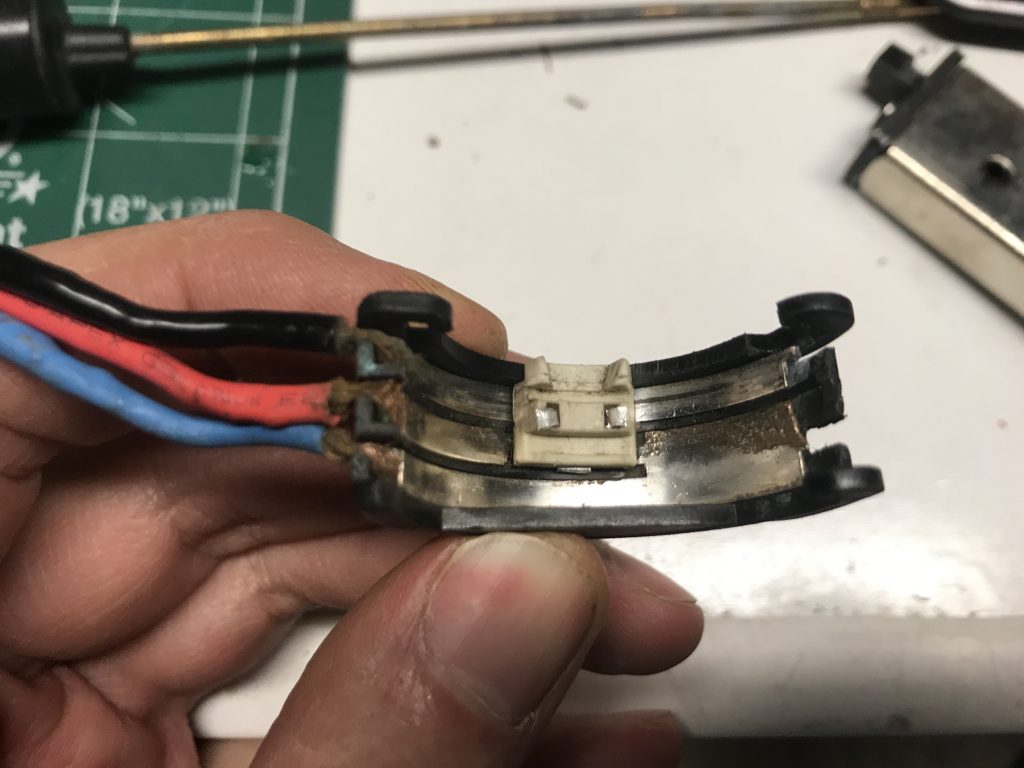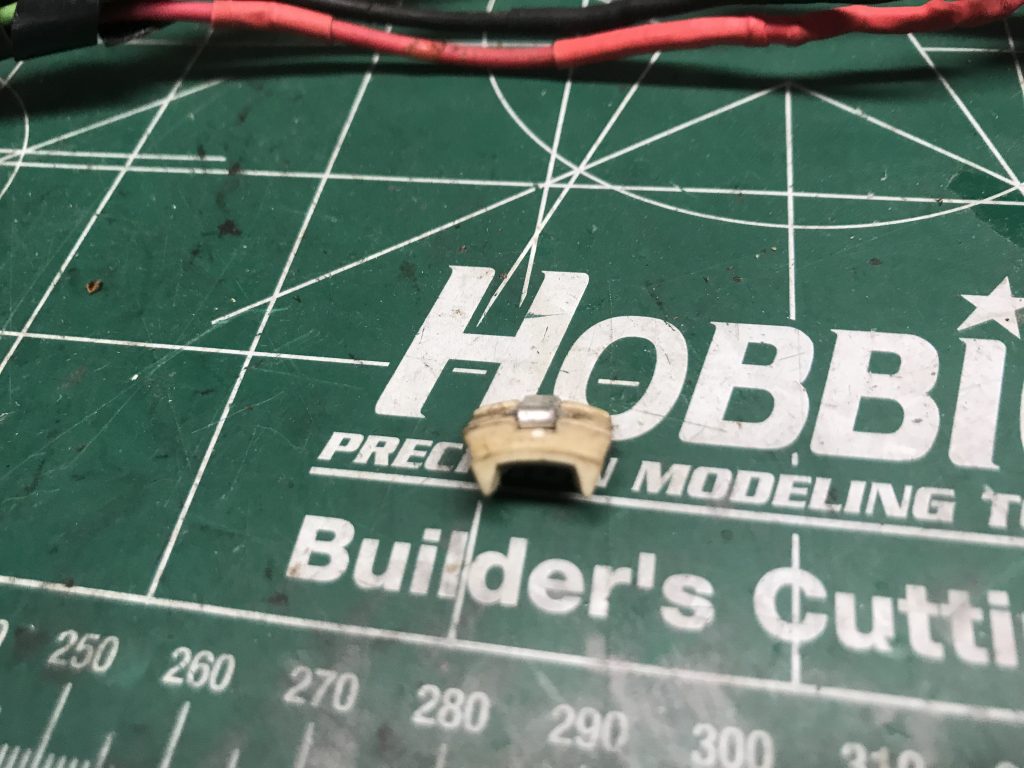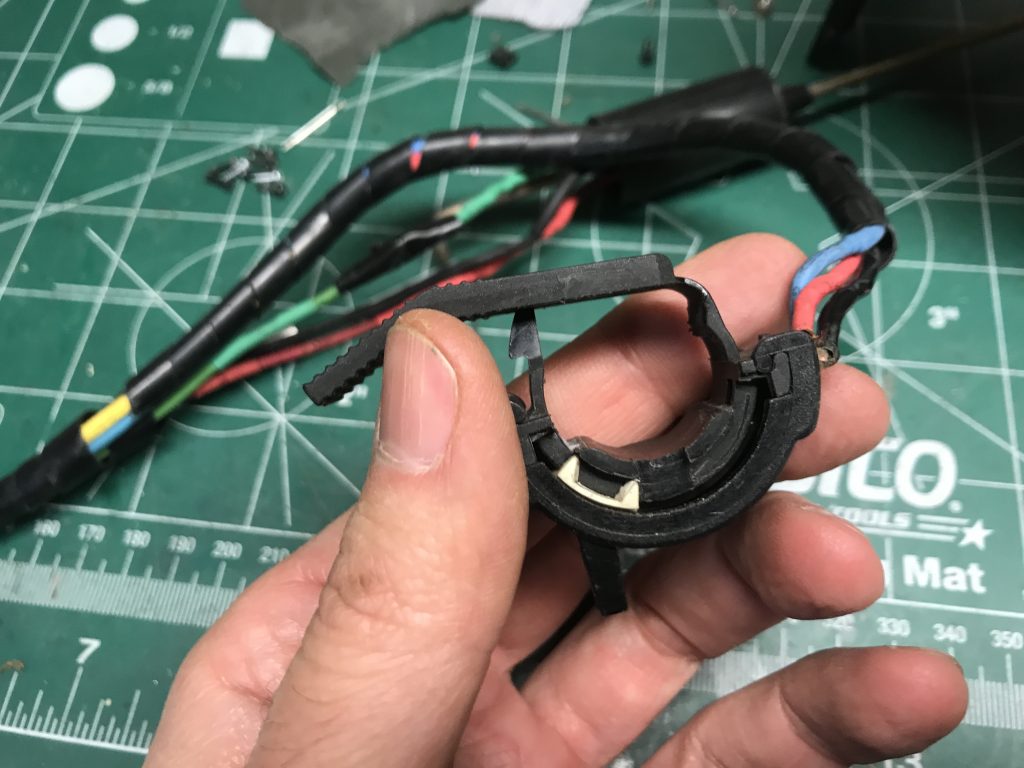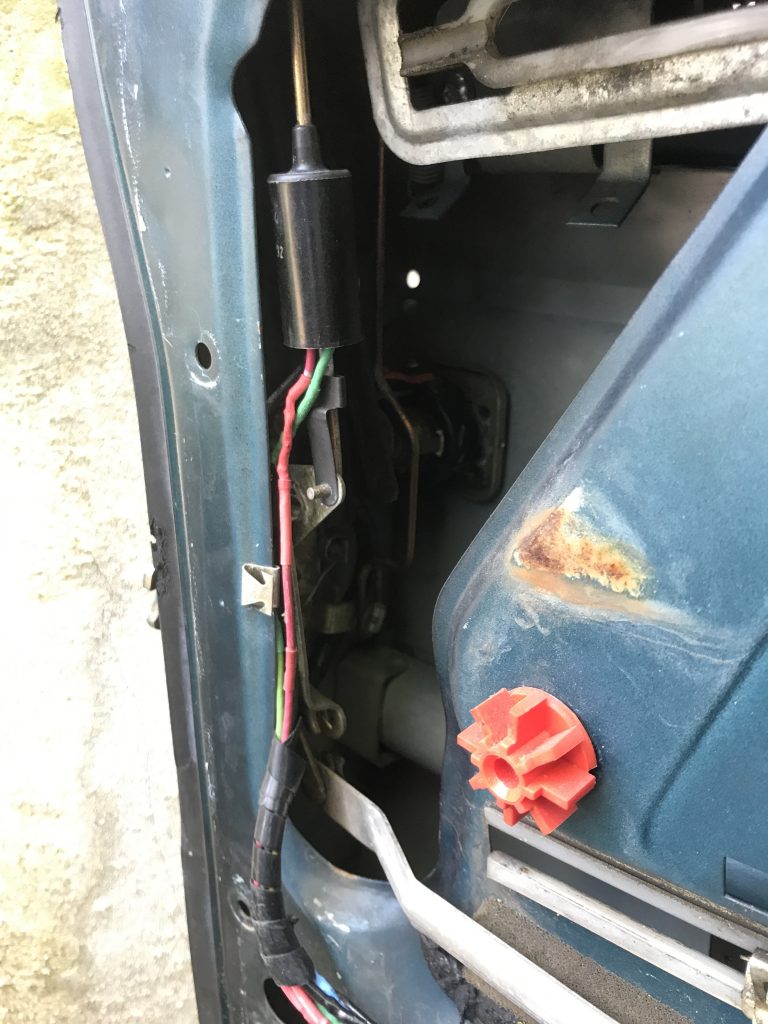Since my Volvo is effectively locked into my driveway by my other cars I don’t worry to much about it being stolen. As such I don’t often both to lock it. Recently after taking the front door panels off in an effort to fix the passenger side door switch and lubricate the window mechanisms I noticed that the driver side central locking switch, part 3540135 which I had previously fixed up, didn’t look right. Specifically the plastic part that connects to the door lock had fallen off. Closer examination showed that not only had it fallen off but it had come apart. Some bad wiring routing on my part had caused that side of the mechanism to get caught on the window as it rolled down, breaking it.
I priced a replacement online and found that they are quite expensive along with relatively hard to find. I definitely didn’t want to spend $80+ to replace a part I had broken through my own incompetence. Before I fired the parts gun at my lock I wanted to see if I could fix what I had broken.
Miraculously I managed to find all three pieces that comprise the assembly. One part was still connected by its wires and another was in the bottom of the inside of the door where it had fallen. The miracle lay with the finding of the third part. It somehow turned up on my front porch. I have no idea how it go there. The best I can guess is that when the assembly came apart this little bit flew out and landed on the ground. Someone, either one of my kids or myself, had found it, picked it up, and placed it on the porch where it sat for who knows how long until I needed it. It was a strange set of circumstances. With all the major components in hand I took the lock assembly out of the door and set about trying to fix it.
A Note on How This Part Works
At it’s heart this part is just a three position switch. One position is “lock”, the other “unlock”, and the third is just “off.” This switch connects to a tab on the door lock that turns as the key turns. The tab fits in a small plastic carrier that rides in a semi-circular housing. When the key in the lock is turned either way the carrier moves from the central neutral position to either end of the housing where it completes either the “lock” or “unlock” circuit. The carrier itself has a small piece of metal embedded in it that spans the inside width of the carrier and completes the circuit. Pretty straight forward.

Reconstruction
While I had all the main pieces I still had a slight problem. The small, white piece that moves inside the carrier was missing the piece of metal that bridges the leads and completes the circuit. It looked as if this part had two thin legs that fit into holders on the white bit with another part that actually completes the circuit arranged perpendicular to the legs. Using tin snips and a nibbling tool I cut a thin sheet of aluminum scrap into roughly the right shape. I should note that the center of the white piece has a small divot in the middle that I believe was meant to hold a very small spring that would keep tension on the metal contact to ensure good contact. I did not have that spring, nor did I have a replacement spring small enough to fit in that hole. Instead a took a small strip of the same aluminum and used it as a shim to make sure the connection part stood slightly proud of the plastic. I then bent the ends of the thin feet part to lock the whole thing in place.

It was then a matter of reassembling the parts and snapping it all together. I did a function test by moving the white part to either side of the carrier and using a multimeter to make sure both circuits were closing as expected.

I then reinstalled the part. This time I made extra sure that the wires would not get caught on the window when it rolled down. To do this I popped the connecting arm of the inside door latch off at the far ends, ran the wires to the lock well behind where the window travels, and reattached the latch.

Now everything was tucked away nicely, the window can be rolled down safely, and most importantly a quick test with the key in the lock showed everything was working as expected.